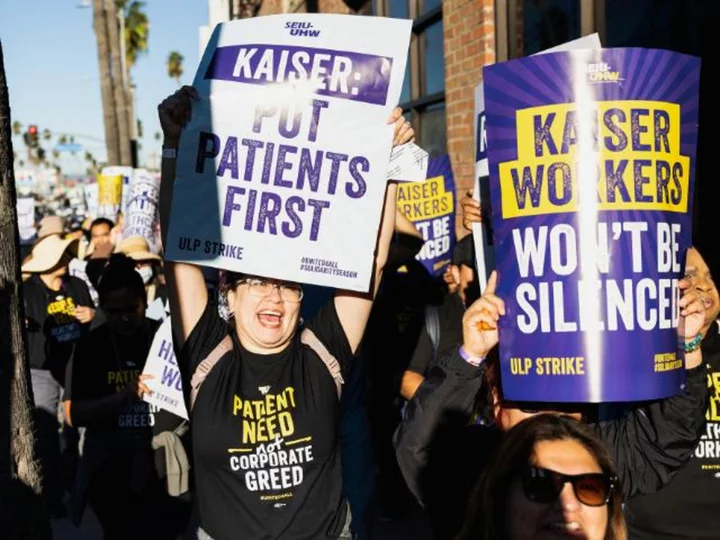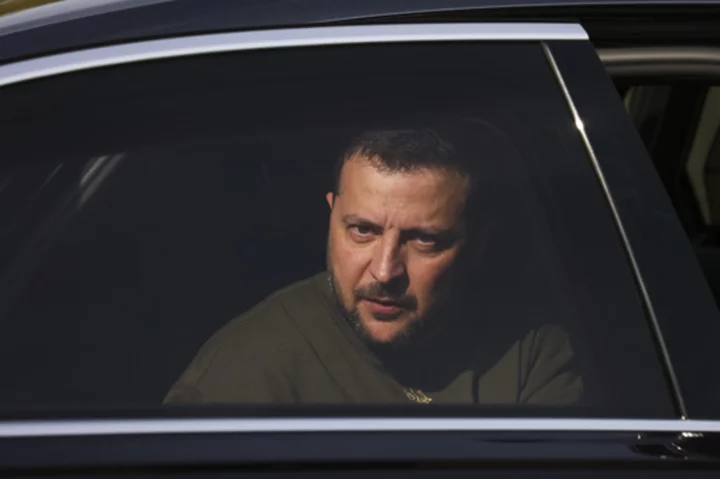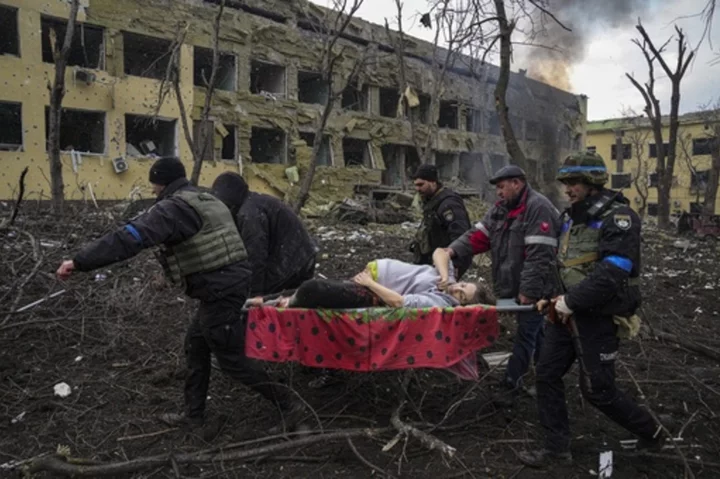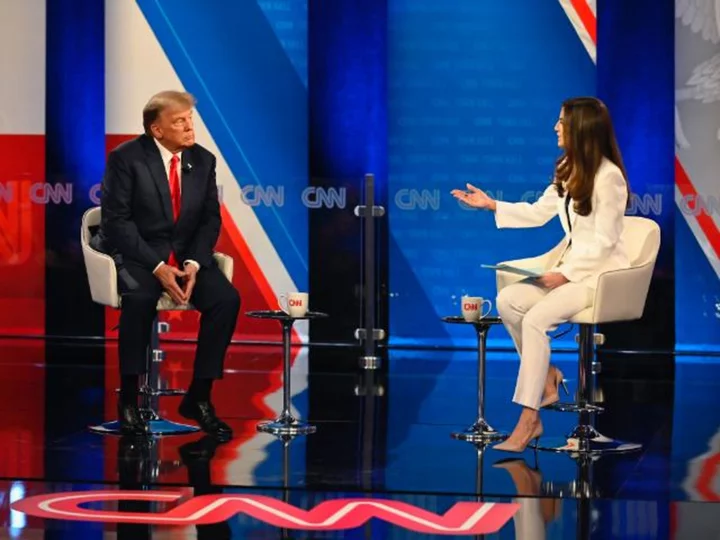The largest health care strike in US history produced a tentative labor agreement for a coalition of unions at Kaiser Permanente — but the deal was reached almost a week after the strike ended.
That might seem odd. Once a strike ends, why should an employer settle? But the cost of the three-day strike earlier this month, and the threat of another, even larger strike next month, brought about a deal with one of the nation's largest health systems.
And the union's win is just the latest reason why short strikes are happening more and more.
Americans often think of a strike as starting with workers walking out and not returning to work until there's a deal, sometimes weeks or months later. That's the way it has worked with the ongoing United Auto Workers Union strike at General Motors, Ford and Stellantis, or the strikes against Hollywood studios by the Writers Guild, which ended only when a tentative deal was reached, or the SAG-AFTRA strike, which has 160,000 actors continuing to strike the same studios.
But the short duration strike, which starts with an end date already scheduled, is becoming a more frequent tool of US labor unions.
So far this year, there have been 196 strikes lasting a week or less, according to a work stoppage database kept by the Cornell University School of Industrial and Labor Relations. Many, although not all, started with an end time already known. That's up 86% from the number of short strikes in the same period of 2021.
There have been only 98 strikes lasting more than a week so far this year, or half the number of short strikes, a more modest 20% increase from 2021.
For example, a strike by 30,000 non-teaching employees of the Los Angeles Unified School District — school custodians, cafeteria workers, bus drivers and other student services staff — kept about a half-million students out of classrooms for three days in March. Like the Kaiser strike, the union announced a tentative labor contract that accomplished many of its bargaining goals, including a 30% pay increase, soon after that strike ended.
Long-duration, open ended strikes are costly not just to employers but also to strikers, who lose their income during the work stoppage. The short duration strikes pain on employers while not forcing union members to give up as much.
"Strikes of this kind are a tactical tool," said Todd Vachon, professor of labor studies at Rutgers University. "They might be building towards a larger future action. I think a lot of activists are discovering the effectiveness of these strikes. I think we're going to increasingly see these short strikes as a tool."
The short strikes are particularly effective in the health care sector, which has seen 33% of major strikes since the start of 2022, according to Labor Department data, despite health care workers amounting for only 9% of private sector union members nationwide.
"Unlike a UAW strike, they can't just shut down when the union goes on strike," said John Borsos, a labor strategist who has led strikes in health care and education. "Management is required to provide the services. There are entities that are set up to provide staffing during a health care work stoppage. But there's a premium cost for doing that."
Borsos, a former labor professor and now the executive director of the Sacramento City Teachers Association, said open-ended strikes can be more effective in some cases, but sometimes a short-duration strike is all that's needed to change the dynamics.
"Sometimes the shock of the short strike produces the movement at the table. Especially when you look at some of larger employers," he said.
The short-term, fixed duration strikes don't necessarily get the union members what they want right away, said Johnnie Kallas, a Cornell PhD candidate and project director of the school's strike database. But he said there are numerous examples of strikers getting the contract they want a few weeks or months later. He cited a three-day strike in September 2022 by 15,000 nurses in Minnesota that led to a contract by December.
"I hesitate to say that this is a total transformation," Kallas said. "But these (short, fixed-duration strikes) are definitely becoming more common."
Many short-term strikers don't have anything to show for their walkouts, at least in the near term. Thousands of Starbucks Workers United union members have been waging a series of one-day strikes at Starbucks locations nationwide since last November, but the union has yet to reach a deal for any of the more than 350 stores where it represents workers.
Sometimes the union waging the strike doesn't have the option to have an open-ended strike.
The Los Angeles school strike in March was what was known as an "unfair labor practice" strike to highlight what the union charges is mistreatment of its members and leaders. But it also came at a time when workers there are trying to win significantly higher wages and improved benefits.
"We're hoping it helps (negotiations)," said Lester Garcia, government relations director for the union, said while the strike was ongoing, ahead of its conclusion and labor deal. That strike was meant to protest working conditions because of state labor laws, but it still drew attention to low pay and other issues.
"Most people don't think about our members when they think about a school. They think about teachers or principals, not custodians or food service workers," he said. "This attention helps our members by bringing them dignity and respect."
And it also limits the costs of lost wages to the strikers.
"The less days of work you lose, the better," Garcia said. "But make no mistake, three days of lost pay may not sound like a lot. But if you're making $14,000 a year and living paycheck to paycheck to paycheck, a three-day strike is making a sacrifice."









